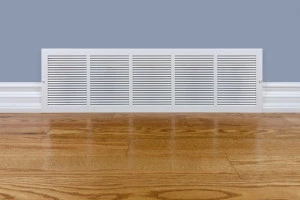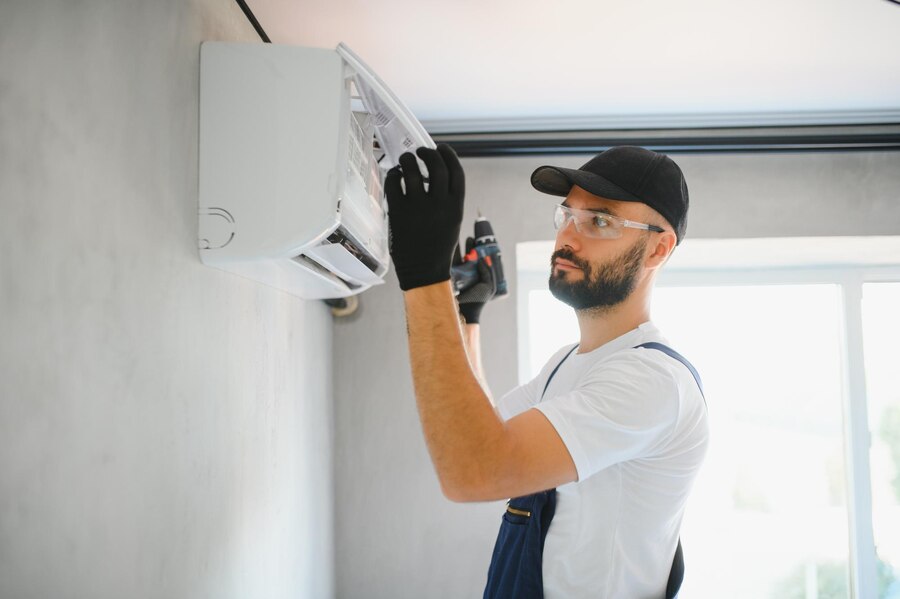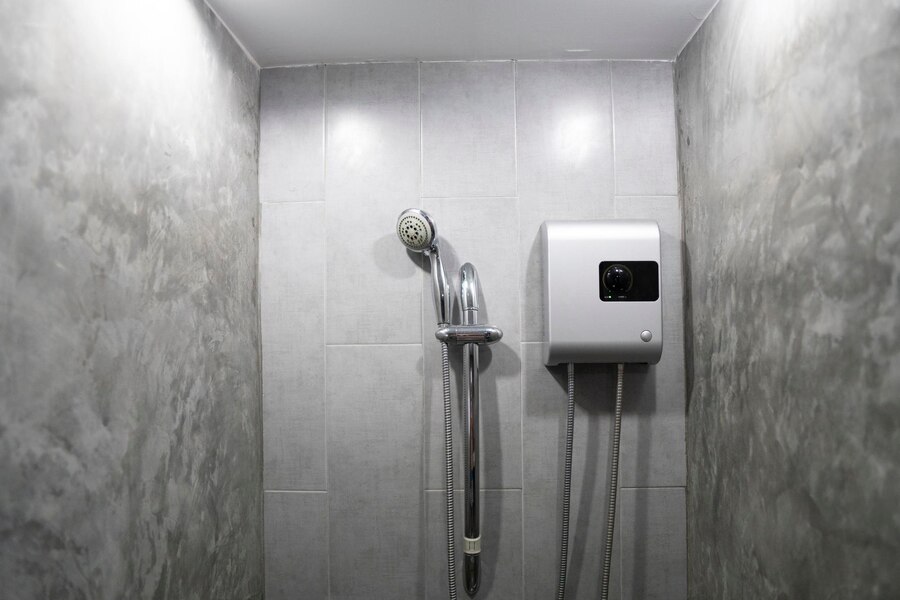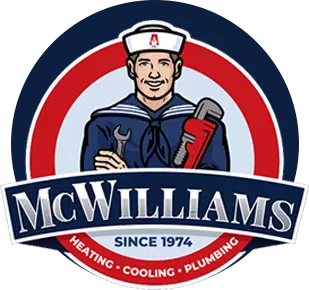Blog
Introduction

Why Whole-House Ventilation Matters?
Although your home may have kitchen and bathroom exhaust vents and maybe some trickle vents over the windows, these usually aren’t enough to provide sufficient airflow. Providing good airflow to every room requires a balanced whole-house ventilation system.
These systems use fans and ductwork to both exhaust stale, humid air out of your home and draw fresh air in. Without any additional components, a system like this would create a cross breeze similar to the one you’d get by opening windows on both sides of your home.
The obvious problem here is that wide-open windows let in air contaminants and humidity while letting out conditioned air. A ventilation system like that would make it nearly impossible to maintain a comfortable temperature in your home.
That’s why heat recovery ventilators (HRVs) and energy recovery ventilators (ERVs) were created. These systems contain a heat exchanger that makes it easier to control your indoor climate conditions while still getting all the fresh air you need.
Although they work in similar ways, HRVs and ERVs aren’t exactly the same. Because of the differences in how they work, they’re not equally suited to all climates or households. The type you choose affects both your comfort and how much energy you save.
HRVs Improve Comfort And Save Money
The typical HRV system includes two fans — one to draw out stale household air and another to draw fresh air into the house. Each one is connected to a set of ventilation ducts that carry the air pulled by the fans. The ducts have openings in different parts of the house. For instance, the exhaust registers might be located in the kitchen and bathroom, while the supply registers are located in the living room and bedroom.
At some point, the two ducts run past each other, but the stale and fresh air streams never mix, so there’s no cross-contamination of your fresh air from your stale air.
Instead, the ducts are connected by a heat exchanger. This heat exchanger draws, or “recovers,” heat energy from one stream and moves it to the other. In summer, when you’re running the air conditioning to cool your home, the HRV grabs heat from the hot incoming air and sends it into the outgoing air. In effect, it “pre-cools” your incoming air so you get a fresh breeze instead of a blast of Texas summer heat.
This is why HRVs are miles ahead of just opening your windows. You’ll have less heat entering your home compared to a non-HRV balanced home ventilation system, so the energy demand on the A/C is lighter, which helps control cooling costs.
When the temperatures drop in winter and you switch from air conditioning to heating, the heat recovery ventilator switches the direction it moves heat. In cold weather, the system’s heat exchanger captures heat from the outgoing stream of indoor air and moves it into the incoming fresh air stream, “pre-heating” the air to prevent chilly drafts and keep your heating bills down.
Depending on the model, HRVs operate at between 75 to 90 percent efficiency so they can capture most of the heat from the air they move. These systems are generally best suited to dry climates with cold winters, primarily the northernmost states from Idaho eastward. In climates with more humidity, however, an energy recovery ventilator is often a better choice.
ERVs Go One Step Farther
Energy recovery ventilators are designed like HRV systems, typically with two fans and two sets of ducts. Like HRVs, ERVs also contain a heat exchanger and can transfer heat between the incoming and outgoing air streams to help maintain a stable temperature in your home.
ERVs do something HRVs can’t, though, which is transfer moisture. To make the system easier to understand for average homeowners, the acronym “ERV” is generally said to stand for “energy recovery ventilator.” In reality, it stands for enthalpy recovery ventilator. In this case, “enthalpy” is related to energy loss in humid air.
The ideal indoor humidity level is around 40 to 50 percent, varying somewhat with the seasons. A humidity level higher than 50 percent encourages the growth of dust mites and mitigate. High humidity can also make you feel hot and sticky in summer and chilly in winter, leading you to adjust the thermostat in an attempt to get comfortable. That, in turn, raises energy bills. This is why you don’t want your home ventilation system bringing in extra humidity from the outdoors.
In summer, when the outdoor humidity is high, an ERV captures moisture from the incoming air and transfers it into the outgoing air stream. In winter, when the outdoor air is cold and dry, your home is prone to low humidity. To correct this, the ERV changes the direction it moves moisture, pulling moisture out of your exhaust air stream and moving it into the incoming air.
Like all home ventilation systems, both HRVs and ERVs bring in some humidity, but ERVs bring in comparatively less. That’s why these systems are usually recommended for humid climates, which includes much of Texas.
Which Home Ventilation System Is Right for You?
A number of factors go into determining the type of home ventilation system that will keep you the most comfortable and control energy bills the best. The climate is one of the most important. In a more humid climate, the ERV’s ability to manage humidity is a big plus. Because the climate around Lufkin and Nacogdoches isn’t entirely uniform, it’s helpful to work with a heating and cooling professional to decide which system is best for the micro-climate in your neighborhood.
The size of your house also matters. A house larger than 2,500 square feet usually does best with an ERV. Another consideration is your household size. The more people in your home, the greater the chance an HRV system will be best for you.
If you own an airtight modern home or a well-weatherized older home, your rooms get little airflow from air leaks. That’s good for your indoor air quality and energy savings, but it increases the risk of high humidity problems. To compound the problem, an airtight house maintains its temperature for longer, so the air conditioner runs less often. That means it may not run often or long enough to remove a significant amount of humidity. For a house like this, an ERV is often the best choice.
Myths about these systems abound, making it harder to choose one. You may hear ERVs shouldn’t be used in cold climates or even during the winter in mild climates because the heat exchanger core can freeze. While this was a problem in the past, it’s unlikely to happen with a modern ERV system.
An ERV can reduce your need for a dehumidifier in summer or a humidifier in winter, but it can’t replace this equipment entirely. In fact, an ERV doesn’t really lower your indoor humidity in summer. It just adds less humidity than an HRV.
HRVs and ERVs aren’t the only types of home ventilation systems available. In our warm climate, a central fan integrated ventilation is often another viable option. Because there are so many options and factors to consider, it’s smart to work with a heating and cooling technician early in your decision-making process.
Learn more about McWilliams Heating, Cooling and Plumbing’s home ventilation options, or call us at (877) 936-1974 to schedule an appointment!
Image Provided by Shutterstock.com
Share This :
Emily
Table of Contents
Discover New Blog Posts
A weak stream of water from your bathroom faucets or shower is more than an inconvenience. It disrupts your routine and slows down basic tasks […]
Strange smells coming from your air conditioning system aren’t just unpleasant. They often signal a problem that needs attention before it gets worse. Homeowners in […]
Tankless water heaters have become a popular choice for homeowners in Cinco Ranch because of their energy efficiency and compact design. These systems are designed […]







